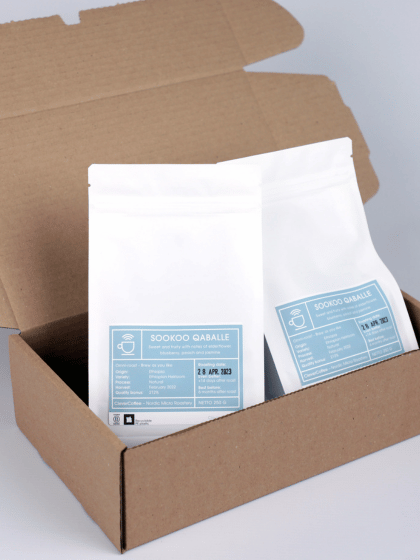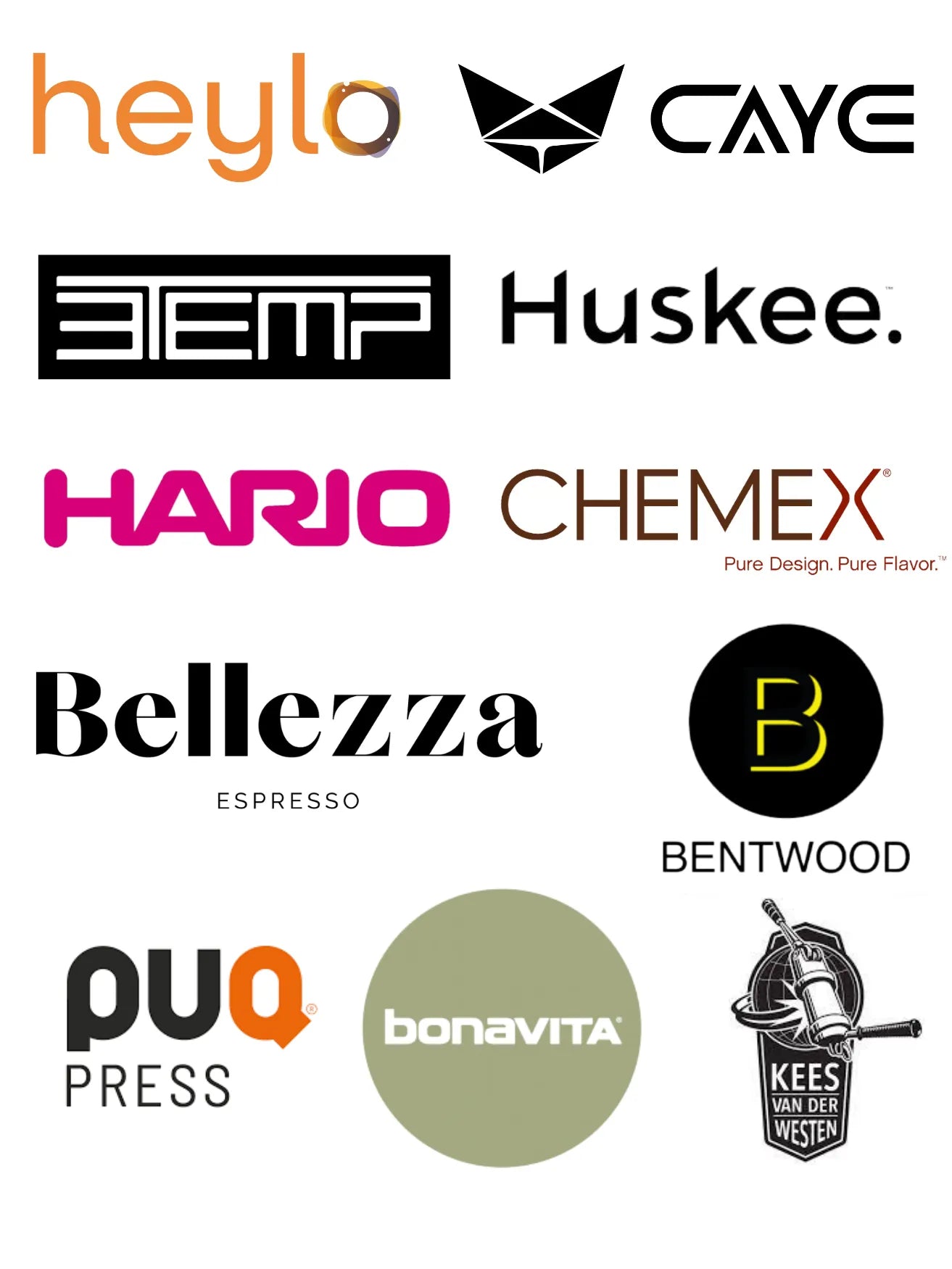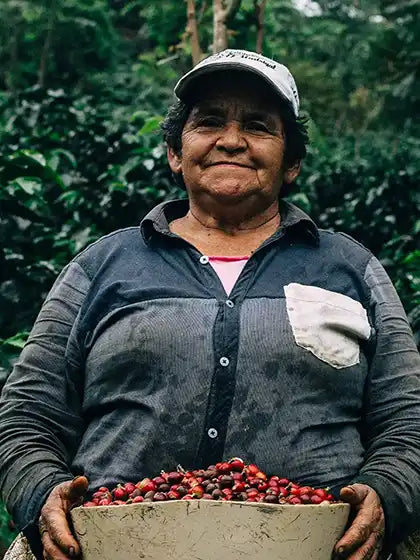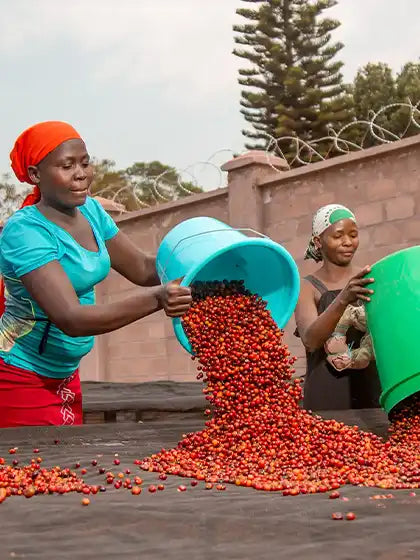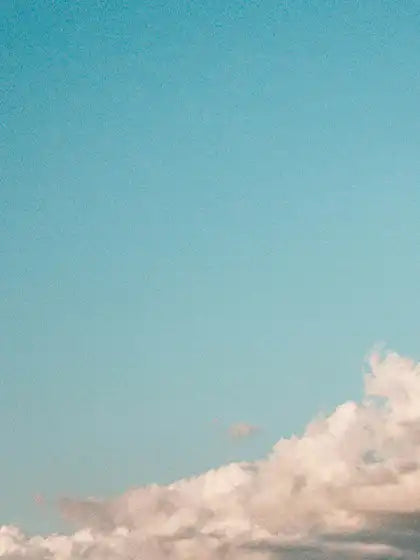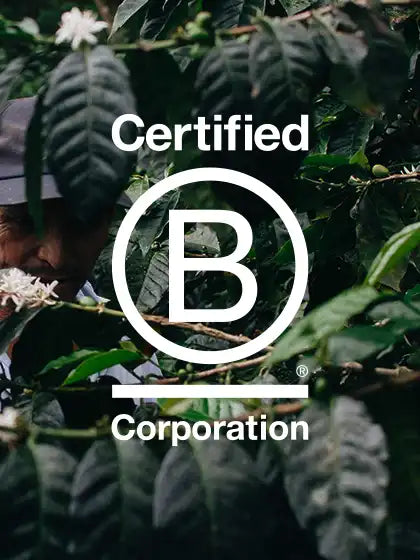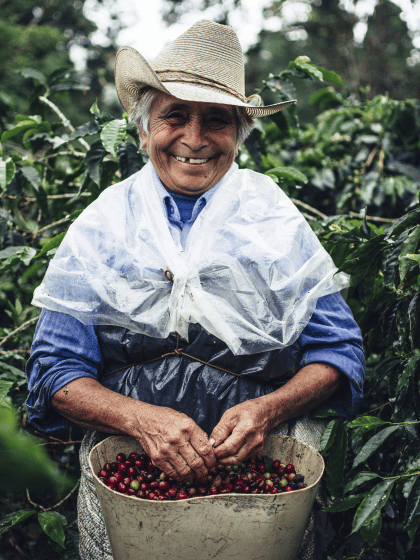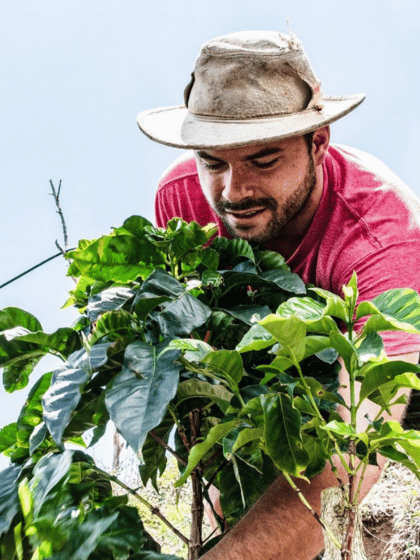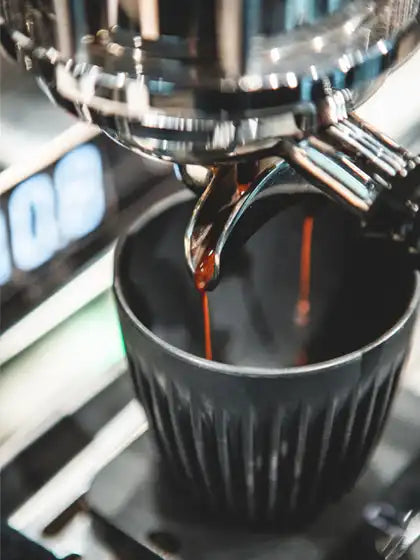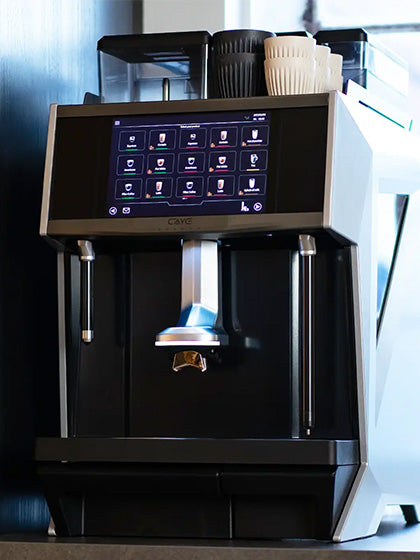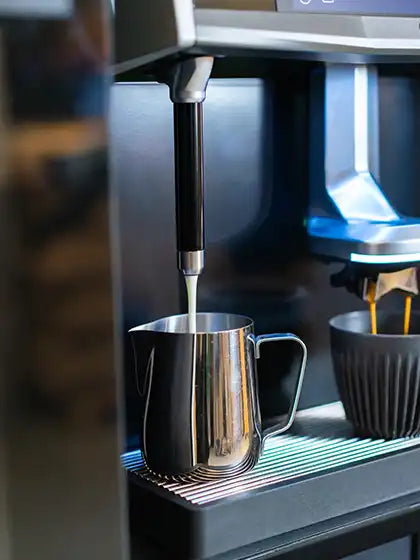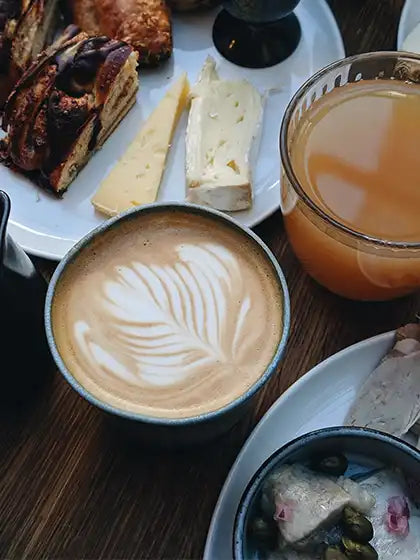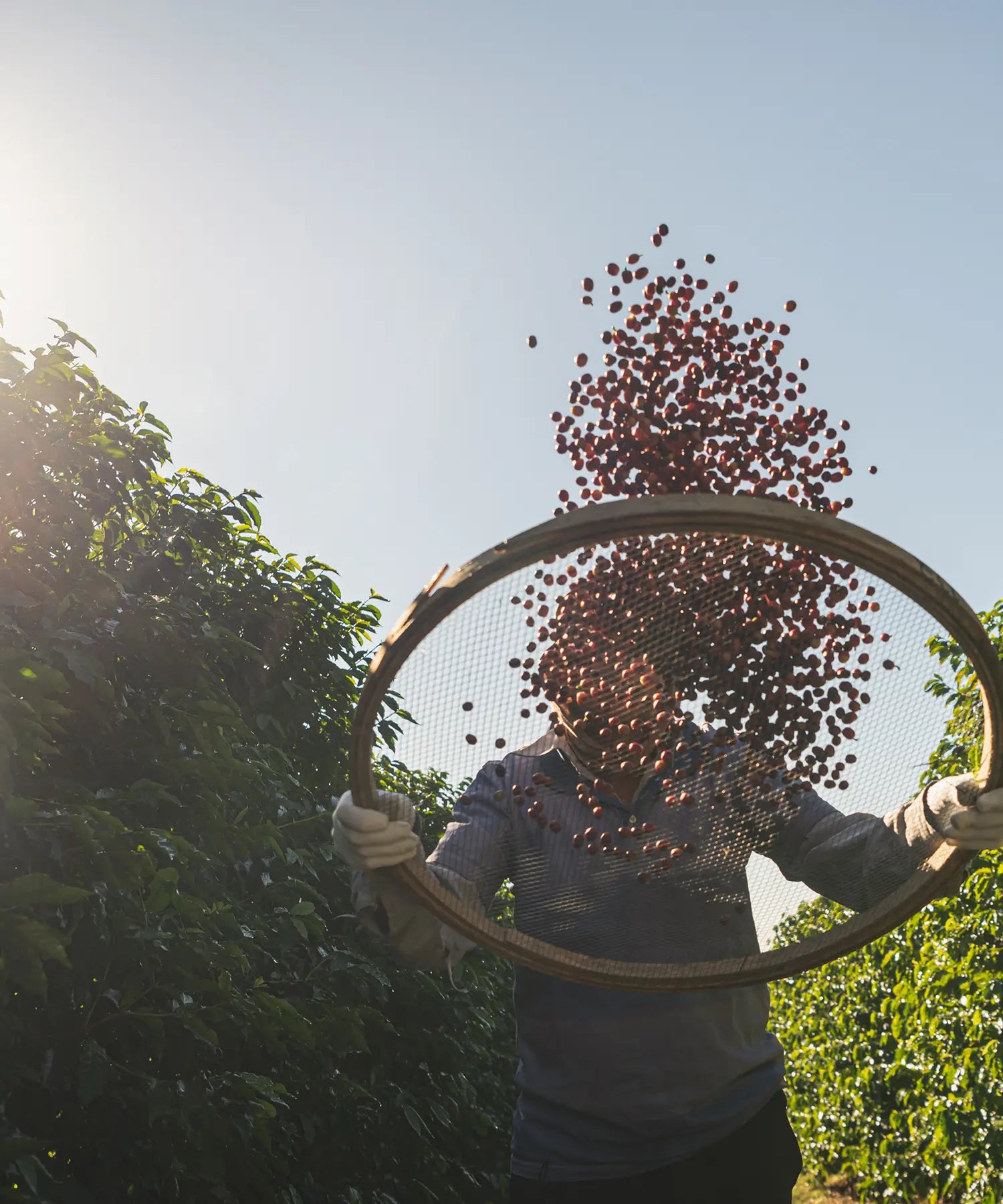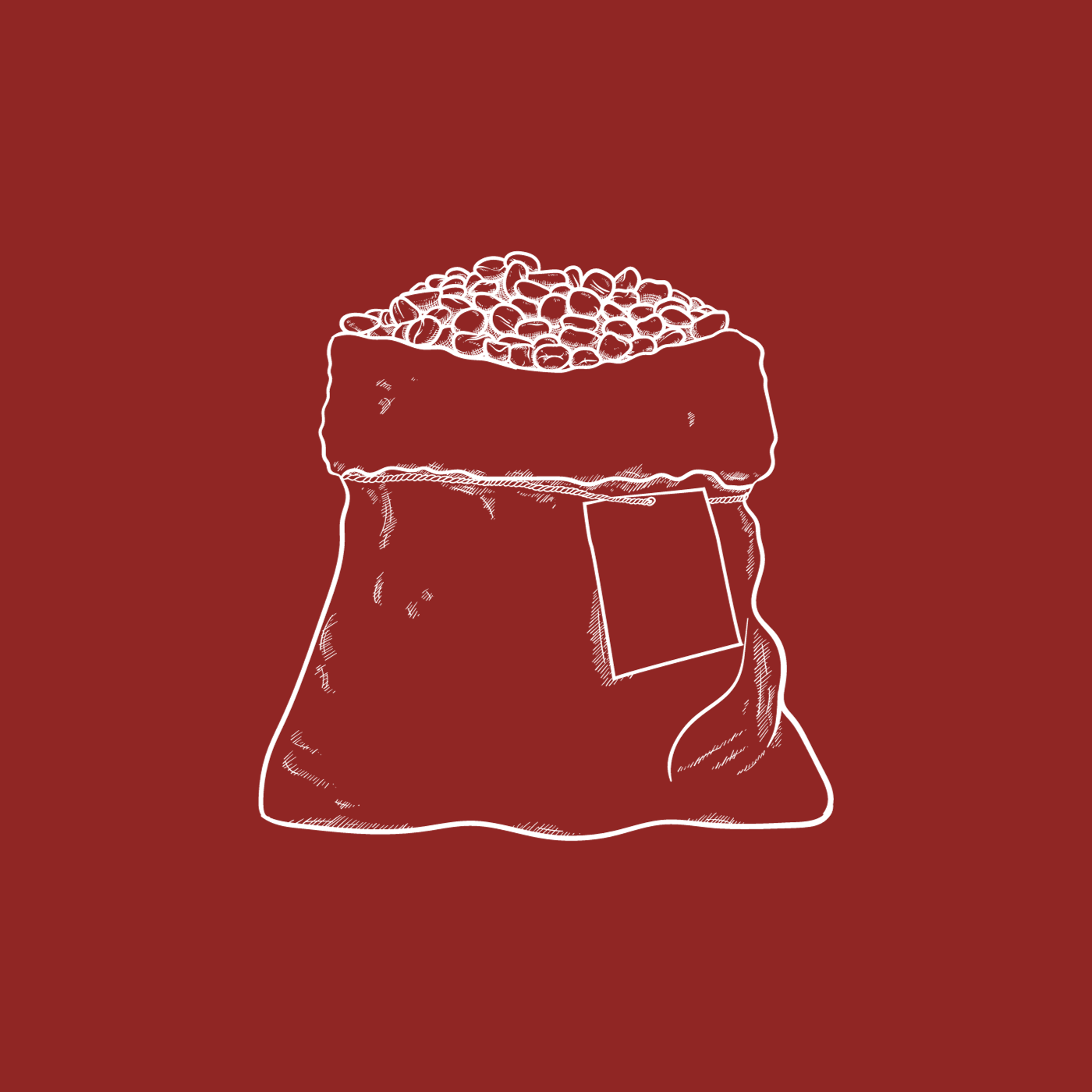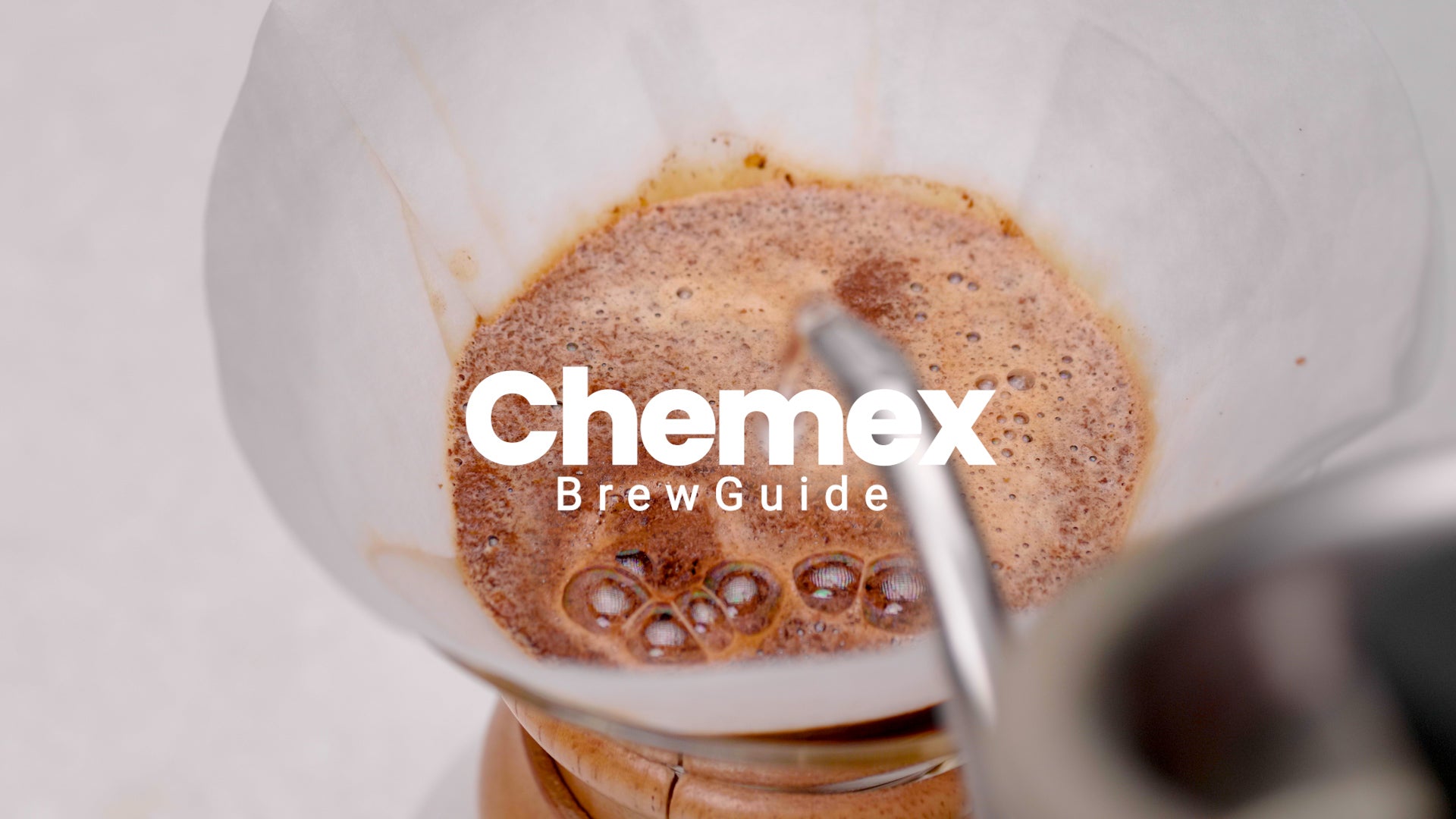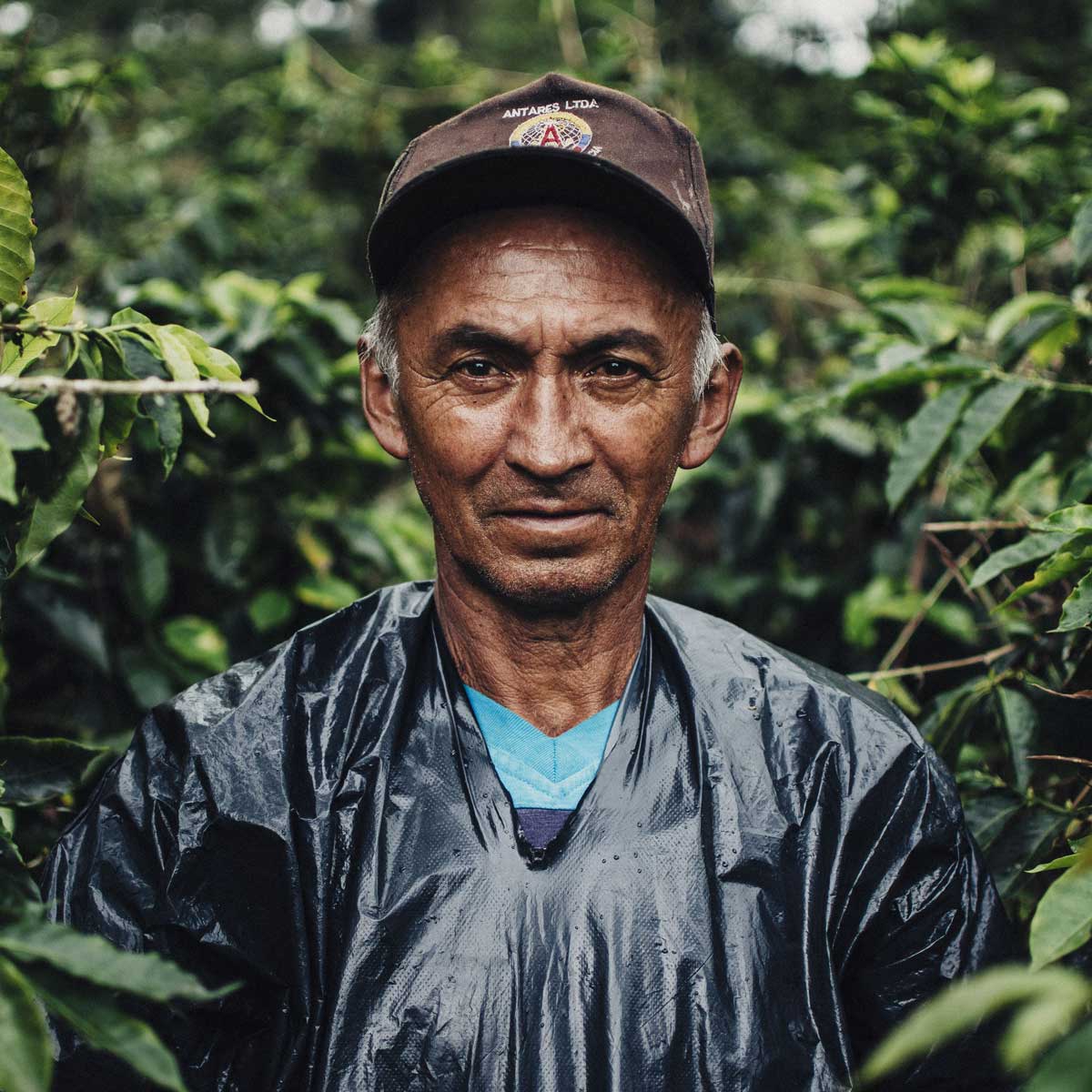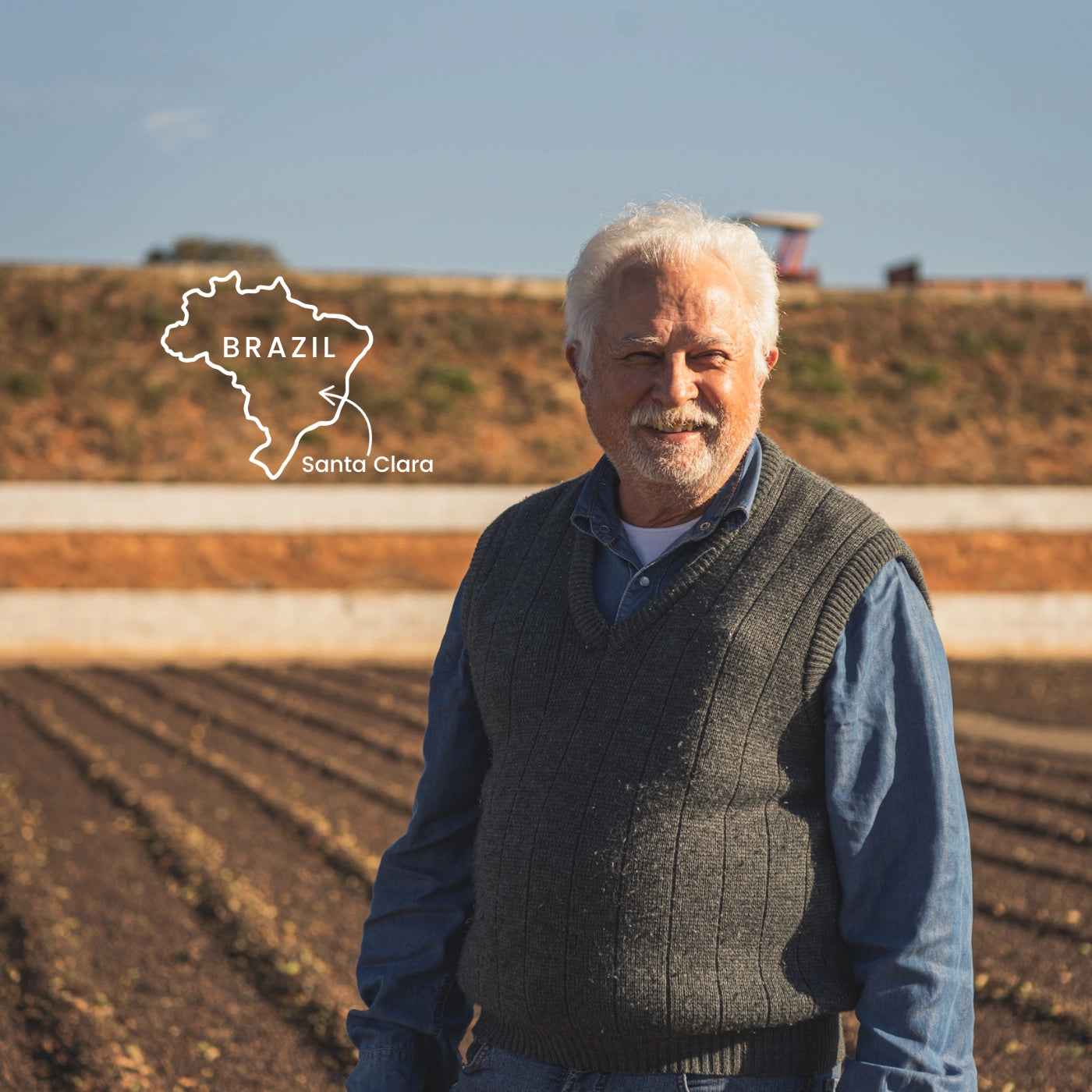
282 kaffefarmere i kooperativet
Specialty kaffe og ansvarlighed i højsædet
Sancoffee har stor fokus på bæredygtig udvikling. De arbejder konstant på at implementere nye tiltag som regenerativt landbrug, bæredygtige energikilder og agroskovbrug.
De er et kooperativ, som kun dyrker specialkaffe i højeste kvalitet. I 2021 købte vi 6000kg kaffe fra Sancoffee, og det er dér en af vores bestsellere – IMPACT No. 01 – er fra.
IMPACT No. 01 er produceret på kaffefarmen Santa Clara. For en farm som Santa Clara er dét fællesskab, som farmerne giver hinanden, en af nøglerne til at sikre en bæredygtig og rentabel produktion. De kan hjælpe hinanden og drage fordel af den effektivisering, der ligger i en større drift af for eksempel våd- og tørmøllen.
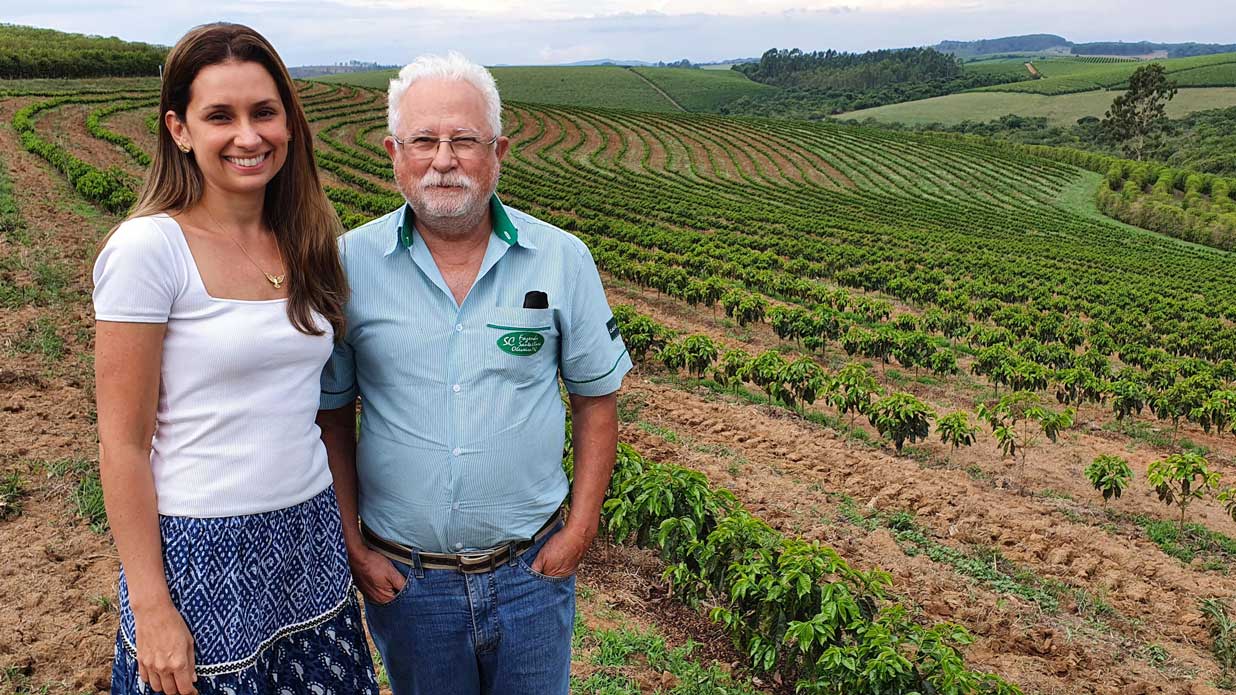
Santa Clara
Gårdens fulde areal strækker sig over 1445 hektar, hvoraf 193 bliver brugt til at dyrke kaffe. 365 hektar bliver brugt til vild beplantning for at sikre biodiversiteten i området.
Indehaveren af Santa Clara er Paulo Afonso de Resende, og han er tredje generation af kaffefarmer. Han er vokset op på en kaffefarm og valgte efter nogle år som ingeniør at købe farmen Santa Clara, som han nu driver sammen med sin familie. Især hans datter Lilian er meget engageret i arbejdet.
Sancoffee kaffe
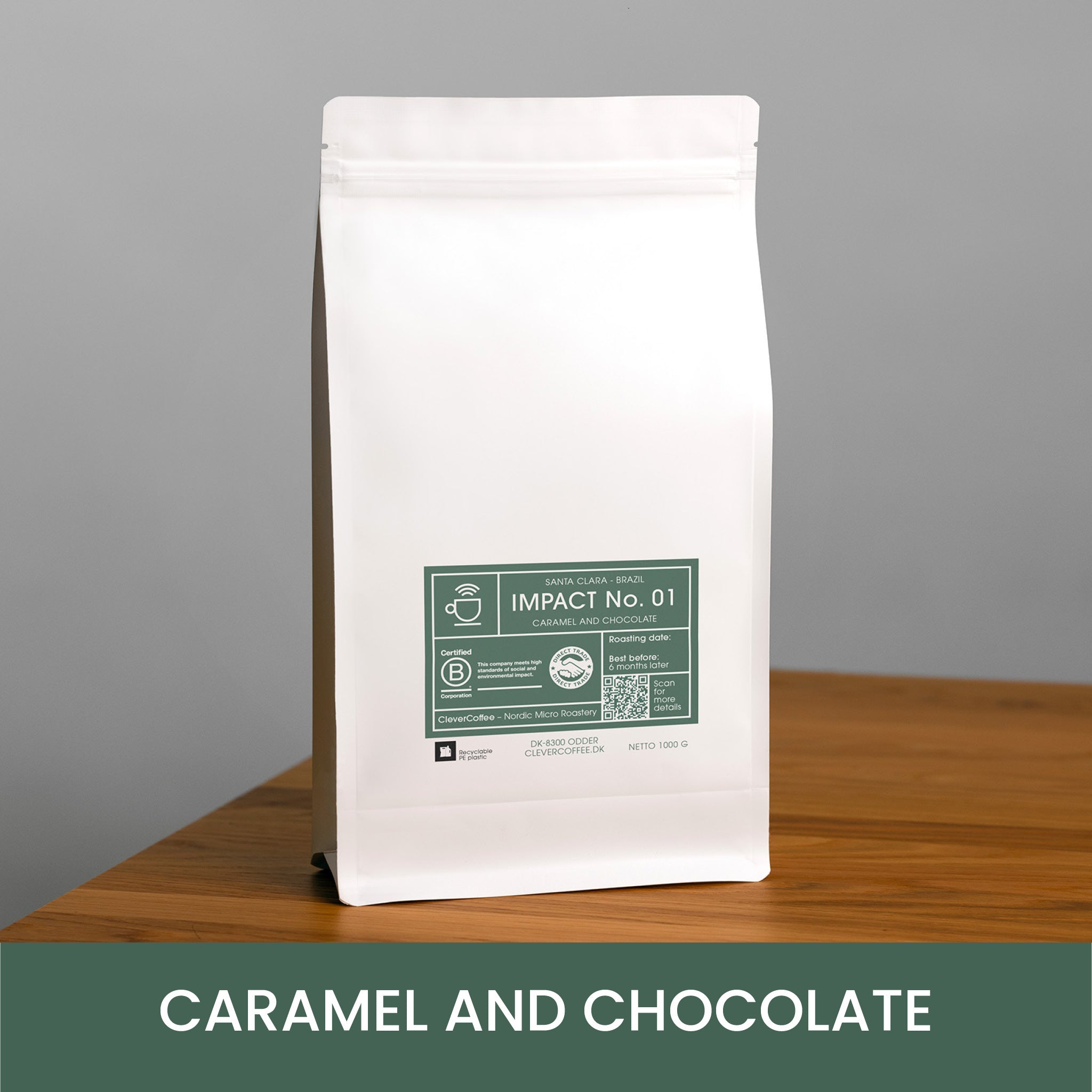
IMPACT No. 01 - Populær kaffe fra Brasilien
Title
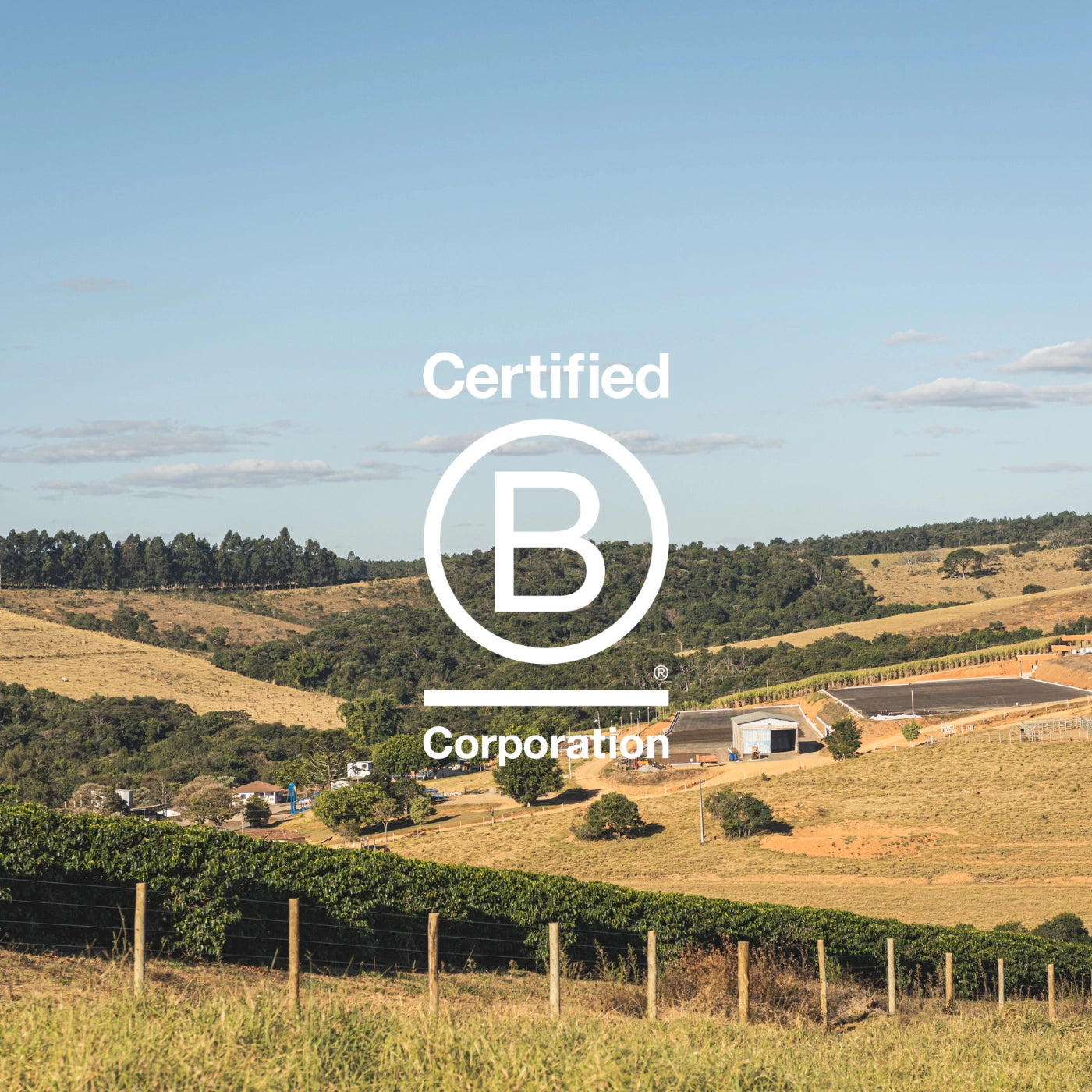
Ikke økologisk, ikke fairtrade, men..
Ud over Sancoffee’s B Corp-certificering, som hjælper Paulo og Lillian, har Santa Clara også valgt at lade kaffefarmen certificere med ”4C Farming”. De 4 C’er står for “The Common Code for the Coffee Community”.
4C er en certificering, der er udviklet specielt med kaffe i fokus, og det er i vores øjne den mest holistiske produktcertificering i markedet. Den vægter nemlig miljø, sociale forhold og økonomi lige højt.
Du kan læse mere om 4C lige her.
Ansvarlige tiltag i kooperativet
I forbindelse med udgivelsen af vores Transparency Report 2022, bad vi Sancoffee svare på 5 spørgsmål.
Her får du deres svar her:
We are excited about this Carbon Program. We are still learning and improving our methods. But, so far, it has been time intensive and expensive. Our main challenges are to develop tools and methods that make it possible to scale the whole process up and to keep the growers engaged and willing to collaborate and to invest into the program, while measuring the emissions and changing production techniques to shorten their farm emissions.
Ana Claudia, Head of Impact at Sancoffee
Currently, our main goal while investing in organic coffees is to push ourselves way out of our comfort zone. we believe with that we can learn more conservationist farming techniques that would yield high quality coffees being sustainably and resiliently produced.
But, if we reached a point in our learning curve where it is possible to have a viable 100% organic coffee production, we would be gladly transitioning all our areas into this system.
Ana Claudia, Head of Impact at Sancoffee
Through the long term and more structural perspectives, we believe the main challenges in place now are climate change, which has been bringing extreme volatility to the businesses; and generation succession either on young farmers and young co-workers throughout coffee supply chain.
Ana Claudia, Head of Impact at Sancoffee
There have been many achievements, but the most outstanding ones are to be the first carbon neutral coffee cooperative in Brazil. We have calculated all the carbon balance from the moment our growers utilize inputs to produce coffee to when our containers go onboard on sea freight vessels; and, we have finished the Bio Recovery diagnostic phase. Now we have numbers, maps, satellite images and other infos about environment and land use conditions for all Sancoffee member farm areas, which comprises more than 15,000 hectares of land in Campo das Vertentes region. Out of this total area, we need to implement actions to recover around 500 hectares, which are degraded.
For 2023 we will go even deeper into our search for means and tools to make it possible to scale our Carbon Program up. The goal is to reach other 300 non Sancoffee member producers with whom we work in the region. Plus, we will go after partners to help us raise funds to start the second phase of Bio Recovery project, which is to implement all the actions we have planned to recover the degraded areas.
Ana Claudia, Head of Impact at Sancoffee
We believe there are several ways roasters can help coffee farmers to achieve sustainability in its broad perspective. And there are few roasters already doing it genuinely, like Clever Coffee.
Here I share some thoughts:
- Communicating and promoting the good initiatives in the consuming markets;
- Keep listening, supporting and doing business with reliable and well intentioned producers;
- Advocating among civil society and police makers in favor of financial incentives to growers preserving the environment and working to reduce carbon emissions.

